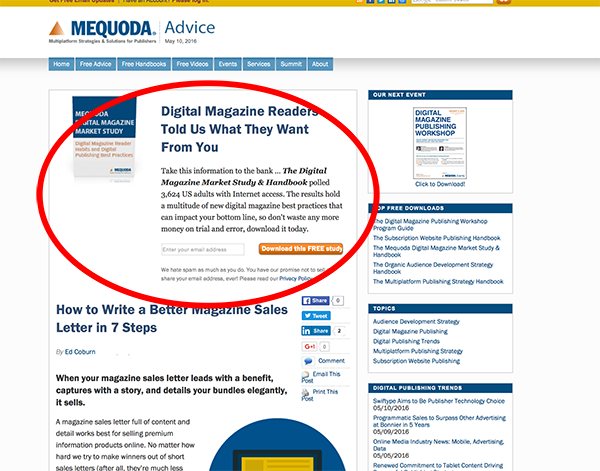What is an OFIE?
Affectionately called OFIEs, “Order Forms in Editorial” are embedded subscription forms that appear on webpages and, indeed, are very much entitled to the respect, consideration, and perhaps even affection of circulators.
According to studies about email capture rates from past and present, most websites see an email capture rate of less than .1%. For publishers who use OFIEs and 3C Zone Architecture, they can expect to see an increase of 21X.
Traditionally, publishers used paid OFIEs—fairly large, coupon-style ads, usually placed in unused space at the bottom of webpages and simply require a user to supply his or her name and address and click “submit”. When used to generate subscriptions to a companion print magazine or newsletter, OFIEs can churn hundreds or thousands of new orders per year at virtually no cost. The key to OFIE effectiveness is prominent, relevant placement as close to the editorial content as possible.

However, free OFIEs are used increasingly on publisher websites, as they focus more on building their email lists to generate revenue for their publications at a later date after earning the trust of their email subscribers with free content.
This type of OFIE usually includes four necessary elements:
- An image of the product being given away, with the title font of the image large enough to read
- A boastful headline that includes the title of the product, letting the reader know it’s FREE
- An email capture form and a button to submit, or a button that leads to the landing page where it will be collected
- A notice about whether or not you’ll sell their email address (people don’t like that much)
Optional: When the OFIE is on a long-form landing page, some publishers choose to add a description of the report into the OFIE. We try not to do that on other pages, because it typically pushes too much other content below the fold.
To learn more about using website conversion architecture elements like OFIEs to increase email subscribers and boost digital revenue, download our FREE Organic Audience Development Strategy Handbook.
Related articles:



